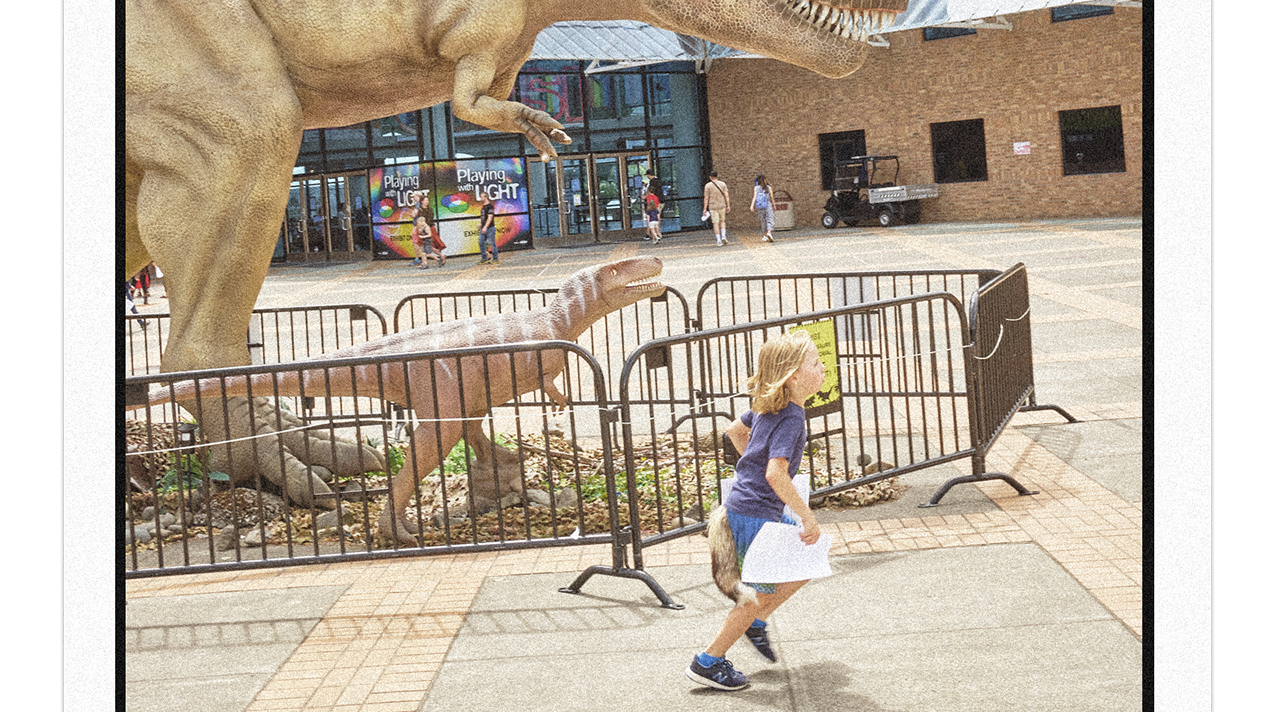A goliath steam turbine. A vintage U.S. Navy submarine. And dinosaurs—don’t forget the dinosaurs.
The Oregon Museum of Science and Industry draws more than a million visitors every year with interactive exhibits that wow the imagination and kindle excitement about STEM fields—which now account for 23% of all jobs nationwide, according to the National Science Foundation.
Looking up at the skeleton of a T-rex, amid the whispered echo of children’s questions, it’s tempting to simply gaze in awe. But like many of its exhibits, OMSI’s backstory carries a deeper meaning.
Portland swooned when the nonprofit museum opened its eastside campus in 1992. Built around a giant sawdust-fired steam turbine, the dramatic entrance inspired a sense of wonder. But then OMSI stumbled into a series of tar pits. Construction overruns for the new space topped $10 million. Schools cut back field trips. Attendance fell. In 1996, the Willamette flooded its banks, inflicting severe water damage. OMSI was closed for several months, starving it of admissions revenue while its debts mounted.
Like a cornered triceratops, OMSI stood its ground, and like a melting glacier, the landscape gradually grew friendlier. Donors rallied to cover the shortfalls. The Eastside Esplanade brought visitors to OMSI’s backyard. The turning point came in 2007, when OMSI hosted the spectacular Body Worlds 3 exhibit, displaying cadavers specially preserved to highlight bones, nerves, veins, and muscle. OMSI pulled out all the stops, even installing an extra elevator to handle the crowds. More than 350,000 people flocked to the show—so many that OMSI stayed open around the clock on the final weekend to squeeze in extra visitors.
Body Worlds helped OMSI get back on track and laid the groundwork for future shows like mummies, computer games, Lego art, and even Nelson Mandela. OMSI now hosts summer classes, outdoor education, and early childhood education for thousands of kids, stoking interest in STEM.
“It’s a place for people to be curious,” says president and CEO Erin Graham. “Curiosity is the key to scientific discovery. People have life-changing, transformative experiences here.”
Bring it forward: Last year, city planners greenlighted an ambitious project to transform the neighborhood around OMSI. The new district will span 24 acres, encompassing the museum, Portland Community College, and the Portland Opera, and feature up to 3 million square feet of new development. The plan calls for a waterfront park, a Center for Tribal Nations, public plazas, business incubators, and 1,200 units of housing.
See for yourself: Treat a kid to OMSI. For an adult experience, check out OMSI After Dark.
Next Story > 2008: Kurt Huffman
 Opens in new window
Opens in new window